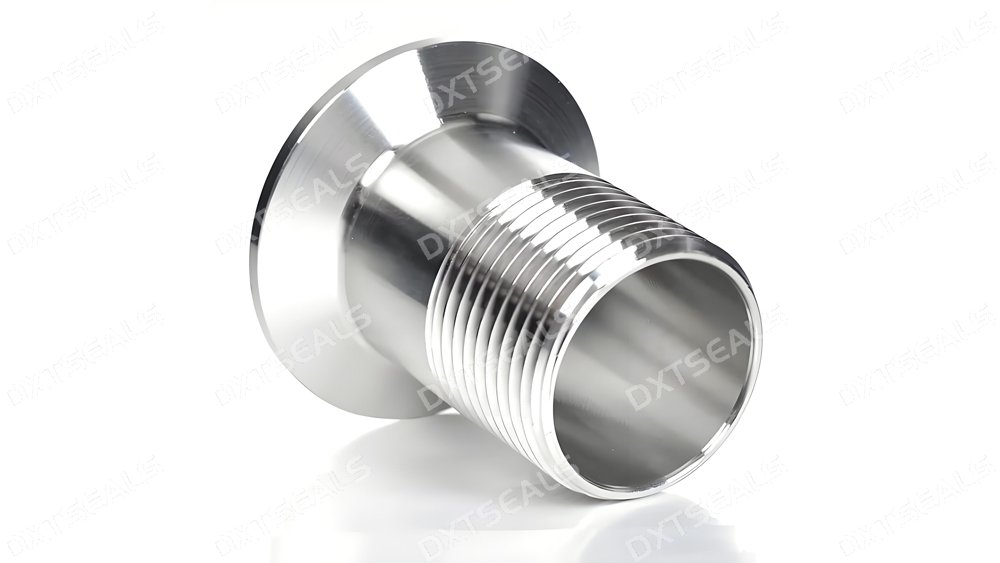
In sealing systems, wear resistance is one of the most critical factors that determine the service life of a component. Seals and their supporting metallic parts are constantly exposed to friction, pressure, and abrasive media, making material selection essential for long-term performance.
This article from DXTSEALS compares the wear resistance of different metals commonly used in sealing applications and provides practical guidelines for choosing the right material.
1. Stainless Steel: Balanced Durability and Corrosion Resistance
Stainless steel is widely used in sealing structures thanks to its good wear resistance combined with excellent corrosion resistance.
-
Wear Resistance: Moderate to high, depending on alloy grade (e.g., 304 vs. 316 vs. hardened martensitic types).
-
Advantages:
-
Resistant to both wear and corrosion
-
Suitable for high-pressure sealing environments
-
Long service life with minimal maintenance
-
-
Limitations:
-
Heavier than alternatives like aluminum
-
Higher cost compared to carbon steel
-
✅ Typical Applications: Flange insulation kits, high-pressure sealing systems, chemical and marine industries.
2. Bronze: Excellent Anti-Friction and Bearing Properties
Bronze alloys are commonly used in sealing systems where low friction and high wear resistance are required.
-
Wear Resistance: Very good, especially in sliding and rotating applications.
-
Advantages:
-
Excellent anti-friction properties
-
Good dimensional stability under load
-
Performs well in lubricated environments
-
-
Limitations:
-
Susceptible to corrosion in acidic or salt-rich environments
-
Higher cost than carbon steel
-
✅ Typical Applications: Bearing seals, pump shaft seals, and sliding wear rings.
3. Carbon Steel: High Strength but Limited Corrosion Protection
Carbon steel offers strong wear resistance when properly hardened, making it a cost-effective choice for sealing components in dry or lubricated conditions.
-
Wear Resistance: Good when heat-treated; hardness levels can be adjusted.
-
Advantages:
-
High mechanical strength
-
Affordable compared to stainless steel and bronze
-
Easy to machine and customize
-
-
Limitations:
-
Poor corrosion resistance without coatings or plating
-
Requires regular maintenance in harsh environments
-
✅ Typical Applications: Hydraulic sealing parts, automotive sealing supports, and structural sealing elements.
4. Aluminum: Lightweight but Lower Wear Resistance
Aluminum is often chosen for its lightweight advantage, but in terms of wear resistance, it performs weaker than stainless steel, bronze, or hardened steels.
-
Wear Resistance: Relatively low, but can be improved with surface treatments (e.g., hard anodizing).
-
Advantages:
-
Lightweight, suitable for aerospace and automotive sealing applications
-
Easy to process and cost-efficient
-
-
Limitations:
-
Poor wear resistance under high friction loads
-
Limited high-temperature strength
-
✅ Typical Applications: Lightweight sealing housings, aerospace seals, low-friction structural parts.
5. Wear Resistance Comparison Table
| Metal | Wear Resistance | Corrosion Resistance | Cost | Typical Applications |
|---|---|---|---|---|
| Stainless Steel | High (varies by alloy) | Excellent | High | High-pressure seals, marine, chemical |
| Bronze | Excellent (low friction) | Moderate | Medium-High | Bearing seals, pump shafts |
| Carbon Steel | Good (heat-treated) | Low without coating | Low | Hydraulic seals, automotive parts |
| Aluminum | Low (improvable by anodizing) | Moderate | Low-Medium | Aerospace, lightweight seals |
6. How to Select the Right Metal for Sealing Applications
When choosing the right metal for sealing systems, consider:
-
Operating Conditions: High friction → Bronze; High load & corrosion → Stainless steel.
-
Environment: Marine or chemical → Stainless steel; Neutral or lubricated → Carbon steel.
-
Weight Requirement: Aerospace/automotive → Aluminum.
-
Budget: Cost-sensitive → Carbon steel; Long-term investment → Stainless steel.
✅ DXTSEALS Recommendation: For harsh and high-friction sealing environments, stainless steel and bronze provide the most reliable performance. Carbon steel is a budget-friendly choice with proper protection, while aluminum is suitable for weight-sensitive applications with surface treatment.
7. Conclusion
The wear resistance of metals directly impacts the service life of sealing components. By understanding the strengths and limitations of stainless steel, bronze, carbon steel, and aluminum, engineers can make informed decisions that balance durability, cost, and performance.
At DXTSEALS, we help customers evaluate their operating conditions and select the optimal material for reliable sealing solutions.
📩 Contact DXTSEALS today to discuss your sealing needs and get expert material recommendations.
